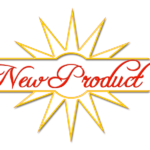
Image by Gerd Altmann from Pixabay
By Amy Sloane
People are constantly coming up with product ideas. Some of their product ideas are great, and other product ideas would have been better left unsaid. Creating a great product doesn’t guarantee success. And there are many products that are subpar that have gone on to be hugely successful. The success or failure of a product has as much to do with understanding the process of product creation as it does with creating the right product.
Creating products that show you understand your customers
Your goal should be to create a product that is going to work well for your customers. To do this, ask yourself a series of questions through the product development process. For example, what problem are you designing your product to solve? What will motivate customers to want to purchase your product? If your customer purchases your product, what is their ultimate goal?
Your product has a greater chance of success if it can help your customer be successful somehow. To understand how your product can help your customers become successful, you must understand what success is for your customers. If you are designing an app that helps your customers organize their life, then success for them would be to walk away with a more organized life. These are factors that you need to take into consideration from the beginning of the design process.
Build a prototype
The next step is turning your design into a prototype. A pre-production prototype is going to be important so you can present your idea to potential buyers or customers. Often, we are talking about a homemade presentation prototype.
Larger scale products may need to be manufactured using processes like rotational molding. This is a plastic manufacturing process that allows for the creation of durable products using polyethylene.
Whether you are building the prototype yourself or you are having the prototype manufactured, there are several benefits a prototype brings. For example, a prototype makes it possible for you to test your design and then refine its functionality. It’s great to have an idea that works in theory. But when you go from theory to reality, you can work out some kinks in your product that you didn’t realize existed.
Building a prototype allows you to test your product by using various materials. For example, you may feel that your product must be designed using metal. Then you realize that a polyethylene material is going to offer similar durability and is more affordable.
When you build a prototype, you have something that is tangible. This makes it easier for you to describe your product when you are discussing it with buyers, marketers, engineers, etc.
Finally, building a prototype means that other people will take you more seriously. If you meet other professionals and have your product in hand, it means that you are not just an idea individual but someone who is taking the steps to get a real product to market.
Get a professional involved
You may have developed a prototype as far as it can reasonably be developed. Now, you may need to get a professional involved. Professional prototype developers can help you if you are dealing with complex materials or need a level of precision that you are unable to attain on your own. A professional could also be a construction worker, a handyman, or a student who is studying design at a university. You want to find someone who can help you perfect your design and take things to the next level.
Creating and bringing a new product to the market is exhilarating. It takes time, patience, and dedication. Your idea could be the next big thing.
______
Amy Sloane is an alum from Oregon State University and spends her free time as a freelance writer and knitting enthusiast. Amy loves reading, cooking, and spending time with her dog, Molly.
